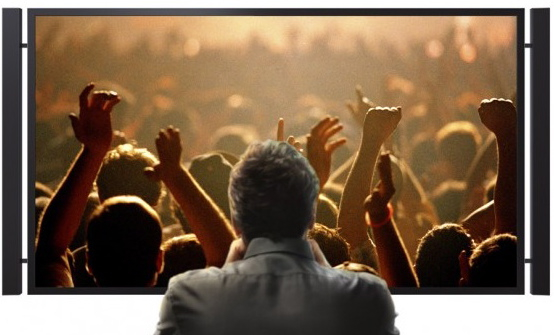IBC 2013: Broadcast Community Debates the Future of 4K TV
September 23, 2013
During the recent International Broadcasting Convention in Amsterdam, the broadcast community debated the practicality of Ultra HD, challenges involved with achieving it, and whether consumers will care. While industry interest remains mixed, companies such as Sky Deutschland and BSkyB are presently testing 4K broadcast transmissions. Stakeholders in Europe are expected to be early adopters of the format, with one estimate projecting more than 110 million Ultra HD displays to reach homes by 2025.
“Andreas Bereczky, executive VP technology and production at German public broadcaster ZDF, urged the industry not to forget HD 1080p,” writes Carolyn Giardina for The Hollywood Reporter.
“It makes more sense to take the next small step, not a big jump,” he said. “And we should not forget the smaller waves which will change broadcasting in the nearer future, like the companion screen. Today customers also have the possibility to consume programs and services not only on the main screen. Our task is to produce the content with the right parameters for the right device with the right distribution.”
“Could you have imagined if we had invested millions and millions in 3D but now no one speaks of it?” asked Bereczky. “I believe 4K displays will find their ways into homes but not as fast as some companies would like. In Germany we have 60 million TV sets which people have only just bought. It will be 3-5 years before we have stable technology to bring 4K to consumers.”
Numerous demonstrations of 4K at IBC — from BT Media, Sony, Sky Deutschland, 3net, SES, Pace and others — indicate that Ultra HD broadcasting is technically achievable.
“Manufacturers clearly view 4K as a priority,” suggests Giardina. “Most major production, postproduction and broadcast vendors came to IBC — which attracted an estimated 50,000 delegates from around the world — with 4K-supported products. Vendors generally said they are starting to see interest in 4K production tools, though delivery to homes remains in question. Also, the HEVC (High Efficiency Video Coding) compression scheme that can support Ultra HD could be a driver and was getting plenty of attention.”
Attendees debated whether there is enough of a difference between HD and 4K for consumer interest (Ultra HD is four times the resolution of today’s HD). Discussions also addressed the economics and business models related to deployment.
According to Ericsson’s Giles Wilson: “it’s not a question of ‘Can I afford to broadcast Ultra HD?’ In every market, someone will do it. Then it becomes a question of, Can you afford not to?”
In addition, for over-the-air broadcasters there is the issue of the spectrum required to carry Ultra HD signals.
Jan Weigner, co-founder and managing director of Cinegy, believes over-the-air broadcasters could be excluded from the 4K delivery chain. “Broadcasters face a dilemma,” he said. “The biggest 4K delivery platform by year’s end will be the PlayStation 4. Many assume 4K to the home will be OTT services.”
“During IBC, global standards-setting body Society of Motion Picture and Television Engineers released a 25-page Ultra HD study group report with analysis of the issues and recommendations on what the society needs to do next,” notes Giardina. “One recommendation is further study of the requirements for color space conversion to and from Ultra HD TV color space and legacy color space, including requirements to standardize colorist metadata. Another recommendation is a study of audio requirements and infrastructure, including standardizing immersive audio formats to be used for Ultra HD TV and standardizing a common file format to describe immersive audio to insure interoperability.”


No Comments Yet
You can be the first to comment!
Leave a comment
You must be logged in to post a comment.